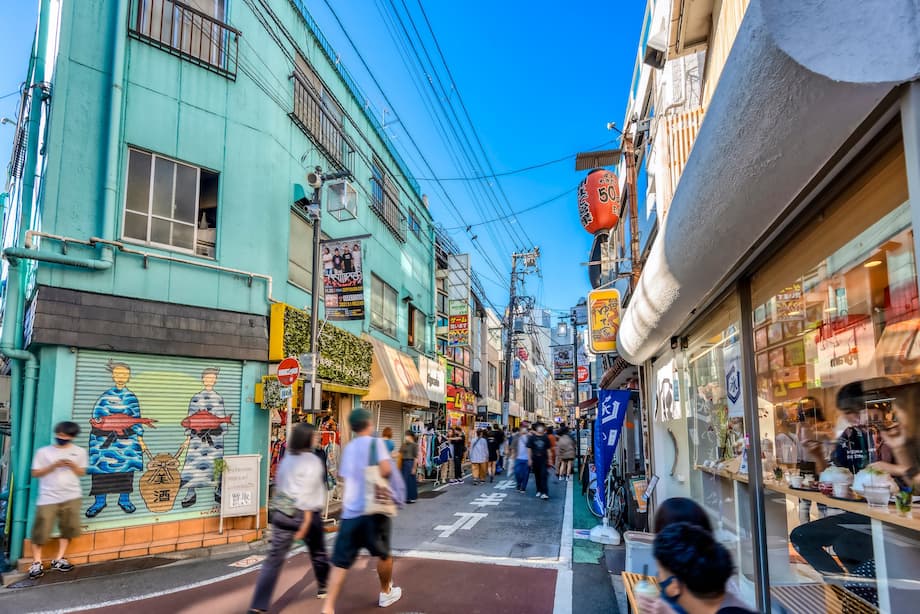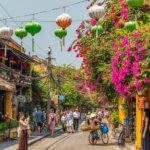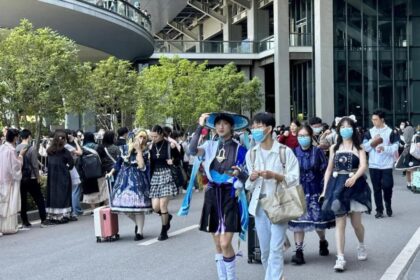Shimokitazawa: Where Tokyo’s Bohemian Heart Still Beats
In a city famed for its neon-lit skyscrapers, relentless pace, and futuristic sheen, Shimokitazawa (often affectionately called “Shimokita”) stands out as a rare pocket of creative calm. Just minutes from the bustling hubs of Shibuya and Shinjuku, this laid-back neighborhood in Setagaya Ward has become a global symbol of Tokyo’s alternative spirit—a place where vintage fashion, indie music, theater, and café culture blend seamlessly with a strong sense of community and resistance to overdevelopment.
- Shimokitazawa: Where Tokyo’s Bohemian Heart Still Beats
- From Village Roots to Cultural Hub: The Evolution of Shimokitazawa
- Vintage Shopping: The Soul of Shimokitazawa’s Streets
- Café Culture and Culinary Creativity
- The Arts: Theater, Music, and Creative Spaces
- Community, Identity, and the Challenge of Redevelopment
- Why Shimokitazawa Remains a Must-Visit
- In Summary
Shimokitazawa’s reputation as one of the world’s coolest neighborhoods is no accident. Recognized by Time Out as the second coolest neighborhood globally, it draws visitors and locals alike with its quirky shops, vibrant arts scene, and enduring sense of authenticity. But what makes Shimokitazawa so special, and how has it managed to keep its cool in a city constantly reinventing itself?
From Village Roots to Cultural Hub: The Evolution of Shimokitazawa
Shimokitazawa’s story begins with its roots as a farming village—its name meaning “lower Kitazawa”—and its transformation into a residential area after the Great Kanto Earthquake of 1923. The postwar years saw an influx of commercial activity, and by the 1960s, the area had become a magnet for students, artists, and musicians, drawn by affordable rents and a spirit of experimentation. The neighborhood’s organic evolution, shaped by winding alleyways and a patchwork of small businesses, set the stage for its later cultural boom.
Unlike many parts of Tokyo, Shimokitazawa’s development was slowed by delays in modernizing the Odakyu train line in the 1980s. This “stalled modernization,” as architect Kuma Kengo described it, preserved the area’s low-rise buildings and narrow streets, allowing a unique local culture to ferment. The result: a vibrant mosaic of jazz bars, vintage shops, cozy cafés, and theaters that continues to thrive today.
Vintage Shopping: The Soul of Shimokitazawa’s Streets
Perhaps nowhere in Tokyo is the vintage and thrift shopping scene as concentrated or celebrated as in Shimokitazawa. With over 200 vintage shops by 2025, the neighborhood has become a pilgrimage site for fashionistas, bargain hunters, and sustainability-minded shoppers. Stores like Chicago, Flamingo, Stick Out (where everything is priced at 700 yen), and New York Joe Exchange (housed in a former public bath) offer everything from rare American denim to quirky Japanese streetwear.
What sets Shimokitazawa apart is not just the quantity of vintage stores, but their diversity and independent spirit. Many shops are run by young entrepreneurs and local creatives, reflecting the neighborhood’s commitment to small-scale retail and ethical fashion. The Toyo Department Store, for example, houses a collection of tiny independent shops under one roof, each with its own distinct personality.
The vintage boom is also driven by broader trends: younger generations’ interest in sustainability, ethical consumption, and the thrill of finding one-of-a-kind pieces. As Tokyo Weekender notes, Shimokitazawa is the top destination for thrifting in Tokyo, rivaled only by neighborhoods like Harajuku and Koenji. The area’s flea markets, such as the weekend market near the station, add to the treasure-hunting atmosphere.
Café Culture and Culinary Creativity
Shimokitazawa’s café scene is legendary. Far from the cookie-cutter chains found elsewhere, the neighborhood’s coffee shops are quirky, independent, and often tucked away in unexpected corners. Whether you’re a coffee connoisseur or just looking for a cozy spot to people-watch, there’s something for everyone.
Standouts include Bear Pond Espresso, famous for its minimalist style and “philosophical” espresso; Bookends Coffee Service, where vintage records play in the background; and Light Up Coffee, known for its specialty beans and relaxed vibe. Newer arrivals like Ogawa Coffee Laboratory bring a scientific approach to brewing, while Hi Monsieur offers doughnuts, books, and a quirky Western-style décor.
But Shimokitazawa isn’t just about coffee. The area is a culinary melting pot, with restaurants serving everything from ramen and yakitori to vegan bakeries and international cuisine. The neighborhood’s curry scene is particularly renowned, with an annual curry festival each October that draws thousands of visitors and features over 100 participating shops. Notable curry spots include Magic Spice Tokyo, Planet of Curry, and SAMA.
The Arts: Theater, Music, and Creative Spaces
Shimokitazawa’s artistic legacy is as rich as its retail and culinary offerings. In the 1980s, actor Honda Kazuo transformed the area into Tokyo’s “theater town” by opening the Suzunari and Honda Theaters, sparking a wave of small-scale theater and live performance venues. Today, eight Honda Group theaters operate near the station, offering everything from experimental drama to comedy and dance.
The live music scene is equally vibrant. Venues like Shelter, Liveholic, and Shimokitazawa THREE host up-and-coming bands and established acts alike, making the neighborhood a launchpad for Tokyo’s indie music scene. Record shops such as Flash Disc Ranch, Disk Union, and Pianola Records cater to vinyl enthusiasts, while listening bars like Masako: Jazz & Coffee provide a sanctuary for jazz lovers. As Nick Dwyer, a Tokyo-based writer and filmmaker, explains:
“Shimokitazawa has always been this kind of bohemian, culturally rich neighborhood in Tokyo. In the 1960s, it was important in the student movement and became a hub for underground culture, jazz kissas, record stores, curry shops, and second-hand clothing stores.”
The neighborhood’s creative energy extends to visual arts and print culture. Art galleries like Gallery Hana and creative spaces such as Sanzou Tokyo showcase local talent, while the area’s zine culture is celebrated by residents like Ebony Bizys, an Australian designer and author who documents Shimokitazawa’s backstreets and Showa-era shops in her self-published zines.
Community, Identity, and the Challenge of Redevelopment
Shimokitazawa’s enduring appeal lies not just in its shops and venues, but in its strong sense of community and resistance to homogenization. The neighborhood has long been a haven for artists, dreamers, and those seeking an alternative to Tokyo’s corporate grind. Its winding streets, low-rise buildings, and independent businesses foster a sense of belonging and creativity that is increasingly rare in modern cities.
Yet, like many beloved urban enclaves, Shimokitazawa faces pressures from redevelopment and gentrification. Recent years have seen new complexes like Mikan Shimokita and Reload rise near the station, offering modern amenities but also raising concerns about the loss of local character. Plans to build new roads and high-rise apartments have sparked debate among residents, with many fearing that the neighborhood’s unique spirit could be diluted.
As sociologist Shunya Yoshimi and architect Kuma Kengo have observed, Tokyo’s future may lie in preserving its “villages”—patchworks of local communities where creativity and community can ferment organically. Shimokitazawa stands as a quintessential example of this vision, balancing change with a fierce commitment to its roots.
Why Shimokitazawa Remains a Must-Visit
For visitors, Shimokitazawa offers a refreshing alternative to Tokyo’s more touristy districts. Its pedestrian-friendly streets invite exploration, whether you’re hunting for vintage treasures, sampling artisanal coffee, or catching a live show. The neighborhood’s affordability—especially compared to central Tokyo—makes it accessible to students, artists, and travelers on a budget.
Beyond its attractions, Shimokitazawa provides a window into Tokyo’s layered identity: a city where tradition and innovation coexist, and where local communities continue to shape the urban landscape. As The Sydney Morning Herald notes, despite increased tourism and new developments, Shimokitazawa “retains its alternative edge and welcoming spirit, remaining a place for individuals and creativity.”
In Summary
- Shimokitazawa is Tokyo’s premier bohemian neighborhood, celebrated for its vintage shopping, café culture, and vibrant arts scene.
- The area’s unique character was preserved by slow development and a strong community ethos, resisting the overdevelopment seen elsewhere in Tokyo.
- With over 200 vintage shops, countless independent cafés, and a thriving theater and music scene, Shimokitazawa is a haven for creatives and visitors seeking authenticity.
- The neighborhood’s annual curry festival, record shops, and art galleries add to its eclectic charm.
- Despite pressures from redevelopment, Shimokitazawa’s residents and businesses remain committed to preserving its independent spirit and sense of belonging.
- Recognized globally as one of the world’s coolest neighborhoods, Shimokitazawa offers a glimpse into the future of urban living—where creativity, community, and individuality flourish.












